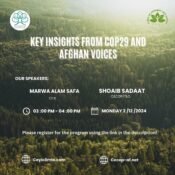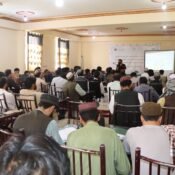
plastic and its environmental and health impacts
Plastic materials are a set of broad organic compounds and semi-compound that are used in industry. Plastics are polymers that have high molecules that consist of other complements which are used to convenience or reduce the cost. The word plastic has been derived from a Greek word that means soft or melted. In general, there are two types of plastics one is known as thermoplastic and the other is thermosetting polymers. Thermoplastic does not change its chemical composition with temperature and can change to its first form. Examples are polyethylene, polystyrene, poly tetra floruethyle. Examples of thermosetting have the ability to melt and get various shapes and once it turned to solid, it will remain solid.
The use of plastic bags and use of plastic items are considered modernity have almost turned to a requirement for shopping groceries, transfer of items from one place to another, keeping food for some times, protecting clothes from dust, covering windows in winter, covering roof from water drops during rain, the cover of the floor, the cover of stairs, protection of paint and cover of shops and billboards, digging and others. Even though the short-lasting benefits of plastic use are visible but in the long run plastic is one of the most dangerous items on earth. In the main cities of Afghanistan including Kabul which is the most populated city in the country over four tons of plastic bags are used. This is an imported item and in each city around 1200 people are involved in the import, selling, and distribution of plastics to consumers.
The use of plastic increased in Afghanistan after 1992, the time when Afghan refugees returned from a neighboring country, and almost 90 percent of plastic bag usage began since then.
The plastic industry in Afghanistan is minor and except few production plants which produce small items such as dishes, drinking cups, sandals, and shoes, however, most of the needs are imported from abroad and such import is undertaken by small-scale investors.
A huge number of plastic distributors are involved in distributing around five and a half tons of plastic bags in various sizes on clothes, dishes, and other sellers. Based on the calculations that this office has undertaken, each kg has 56 plastic bags and about 5.5 tons of plastic garbage are thrown into Kabul city on the streets, roads, residential, business, and service providers areas, and if they are collected in normal conditions, around half jerib (2023 meter) land will be required to bury them and if they are pressed it will take 25 square meter land to bury them. Even though, they are organic materials but will take 400 to 900 years to decompose.
Sample figures collected from about 109 grocery shops, vegetable markets, hand seller vegetables, grand malls, spare parts sellers, pharmacy shops, and others show that each of these sources used half kg or 27 plastic bags on average to satisfy their consumers. Looking at the shops and markets in downtown Kabul, there are around 9340 shops, which means that each day there is 4670 kg or 261520 plastic bags are needed. If we look at the wider vicinity of Kabul city this figure goes up to 5.5 tons of plastic bags. One of the reasons for the increased use of plastic bags is the lack of awareness of the public about the harms of plastic bags, people still think that plastic bags are one of the requirements of purchasing goods. While our elders were hundreds of times better than our current and even educated generations. They used simple and clean materials for bags such as paper or clothes and other materials which would decompose easily which not only prevented the air pollution but it also helped in the fertilization of land. In recent years, environmental experts recommend using means which are easily decomposed by nature.
All Categories
Recent Posts
+93764486009
infor@cecop-af.net




